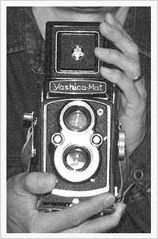Thank you, gentlemen. I'll try to respond to all of your our thoughts and suggestions.
The Minicraft T-34 kit includes the seats but not the engine, so I'd have to look elsewhere for that or just not include it, as GMorrison suggests. As I said, I didn't see the remains of the canopy, the right wing and horizontal stabilizer, or the prop, or the wheels. I was told that the only item that was salvaged was the altimeter.
I do know T-34’s registration number (see the photo of the model, which includes DIY decals showing the correct registration number).
The aluminum foil is an interesting idea. I've often thought that the wreckage resembled a ball of bright yellow, crumpled aluminum foil. Can aluminum foil be painted with Tamiya spray paint?
In the moments before the crash, the engine was running smoothly, probably at maximum rpms: seconds earlier, we had flown past a small forest fire, and the pilot was planning to climb over a ridge to our left, just as we had done after our first flypast of the small forest fire we’d been sent to. It seems likely that the plane stalled, and the pilot was trying to regain control when we crashed. The Mentor has a known instability problem in low speed turns. He was an experienced pilot, with 25,000 hours experience, although I don't know how much of that was in the Mentor.
I had all of two or three seconds from the time I realized the aircraft was upside down (or the trees were growing down from the sky) until we hit the trees. I knew I was going to die — people just don't live through crashes like that. I wasn't afraid of dying; what's the point of being afraid of dying when you "know" it's imminent? I remembered that I hadn't told my mother that I was going to be flying over a forest fire. For a few seconds, the ride was like being on the mother of all bucking broncos, and then I was knocked unconscious. Since I had no more than a small cut on the back of my head, I assume that my head was thrown about so violently that my brain was repeatedly slammed hard against the inside of my skull by the violent forces of the crash, during which it seemed we were being thrown in all directions at the same time. I was unconscious for several minutes, at least, and perhaps as long as half an hour. I've since learned that any period of unconsciousness following trauma is evidence of severe concussion.
Many people, of course, have told me that it was a miracle we weren't killed, but I don't buy that at all. Neither the pilot nor I died because the T-34's kinetic energy bled off relatively slowly with each tree it hit before “encountering terrain” (nice euphemism!) at a shallow angle and sliding through the forest. As well, my safety harness also helped to protect me from severe injury or death. I had asked the pilot if I could unbuckle the harness; it was so tight I couldn’t easily turn to take photos. He suggested that I just loosen it slightly. I did that, and while the safety harness probably saved my life, I was violently slammed against it multiple times during the crash and ended up with a black V-shaped bruise from my shoulders to below my belly button. For a few days, just breathing was difficult.
The plane must have come to a stop very suddenly, because, after the crash, I found my brand-new Yashica-Mat TLR camera at the base of large ponderosa pine several yards from the wreckage. My shoulder harness kept me from flying out of my seat when the plane came to rest, but my camera was secured only by its neck strap around my neck. When I found the camera, its neck strap had snapped in two, and it had obviously hit the tree at high speed: its viewfinder, view screen, and back were gone, the crank that wound the film and set the shutter was bent into a "U," and the sides of the camera body were caved in. Remarkably, its lenses were untouched. When I picked it up, the roll of 120 film tumbled onto the ground, so I'll never know if I got the picture I wanted, of a Grumman TBM dropping a load of fire retardant on the small forest fire.
I joined the Navy a few months later, and was posted to the Navy hospital in Yokosuka, Japan. I took the wreckage of the camera into a camera shop in Yokosuka; they sent it to the Yashica factory in Tokyo, and it came back to me a couple of weeks later, completely refurbished and in operating condition. I have it still, although it went through two other owners before I re-acquired it. I know it's the same camera: I remember the scratches it exhibits, and the crank shows signs of the crash damage. Here's a photo of the camera as it is today:

I will look into obtaining copies of those model railroading magazines. Yesterday I was thinking that the proposed diorama was way beyond my skill level. Today I’m thinking that it just might work out, thanks to your suggestions.
Bob Ingraham
Vancouver